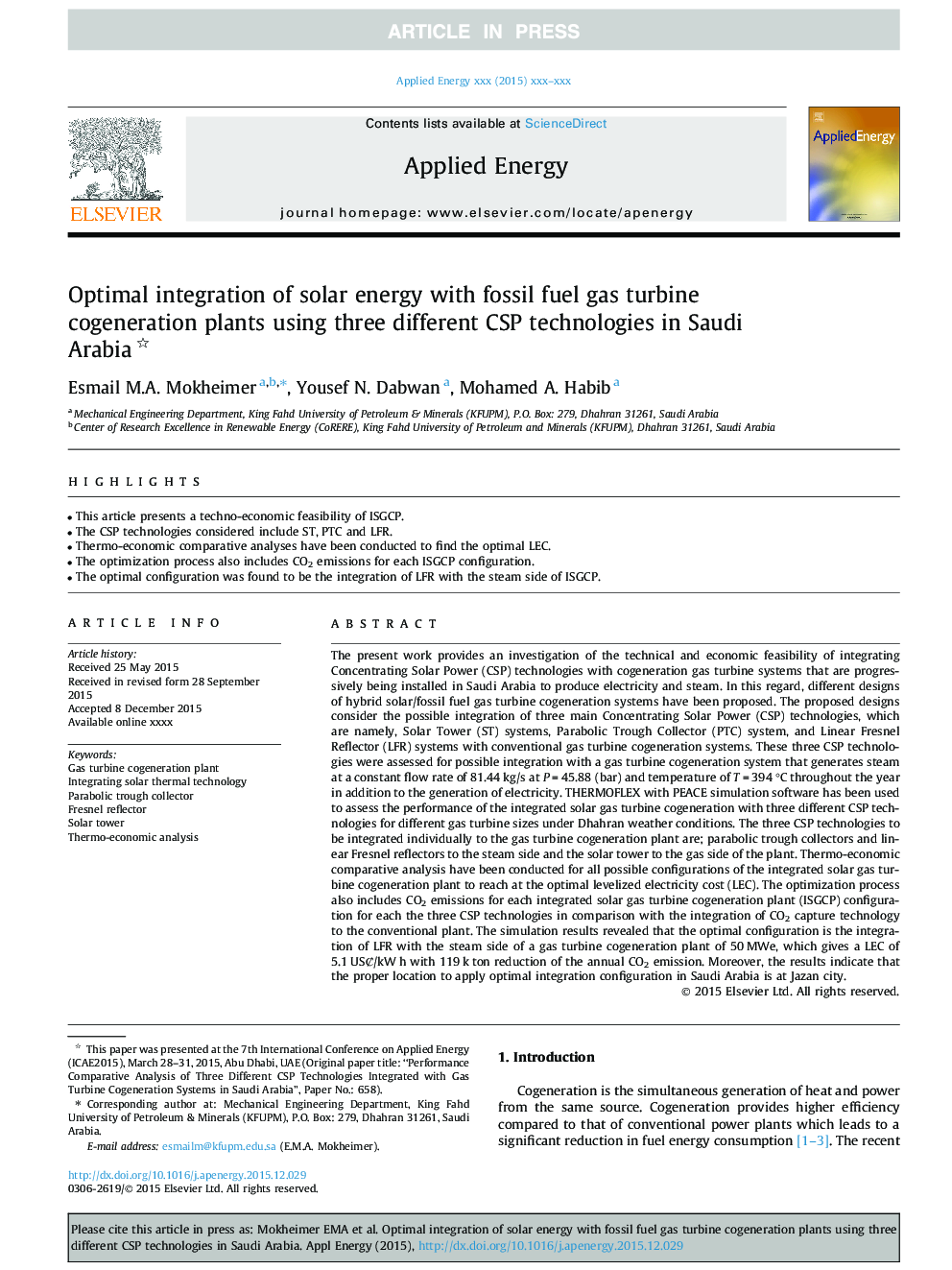| Article ID | Journal | Published Year | Pages | File Type |
|---|---|---|---|---|
| 4917061 | Applied Energy | 2017 | 13 Pages |
Abstract
The present work provides an investigation of the technical and economic feasibility of integrating Concentrating Solar Power (CSP) technologies with cogeneration gas turbine systems that are progressively being installed in Saudi Arabia to produce electricity and steam. In this regard, different designs of hybrid solar/fossil fuel gas turbine cogeneration systems have been proposed. The proposed designs consider the possible integration of three main Concentrating Solar Power (CSP) technologies, which are namely, Solar Tower (ST) systems, Parabolic Trough Collector (PTC) system, and Linear Fresnel Reflector (LFR) systems with conventional gas turbine cogeneration systems. These three CSP technologies were assessed for possible integration with a gas turbine cogeneration system that generates steam at a constant flow rate of 81.44 kg/s at P = 45.88 (bar) and temperature of T = 394 °C throughout the year in addition to the generation of electricity. THERMOFLEX with PEACE simulation software has been used to assess the performance of the integrated solar gas turbine cogeneration with three different CSP technologies for different gas turbine sizes under Dhahran weather conditions. The three CSP technologies to be integrated individually to the gas turbine cogeneration plant are; parabolic trough collectors and linear Fresnel reflectors to the steam side and the solar tower to the gas side of the plant. Thermo-economic comparative analysis have been conducted for all possible configurations of the integrated solar gas turbine cogeneration plant to reach at the optimal levelized electricity cost (LEC). The optimization process also includes CO2 emissions for each integrated solar gas turbine cogeneration plant (ISGCP) configuration for each the three CSP technologies in comparison with the integration of CO2 capture technology to the conventional plant. The simulation results revealed that the optimal configuration is the integration of LFR with the steam side of a gas turbine cogeneration plant of 50 MWe, which gives a LEC of 5.1 USȻ/kW h with 119 k ton reduction of the annual CO2 emission. Moreover, the results indicate that the proper location to apply optimal integration configuration in Saudi Arabia is at Jazan city.
Related Topics
Physical Sciences and Engineering
Energy
Energy Engineering and Power Technology
Authors
Esmail M.A. Mokheimer, Yousef N. Dabwan, Mohamed A. Habib,
